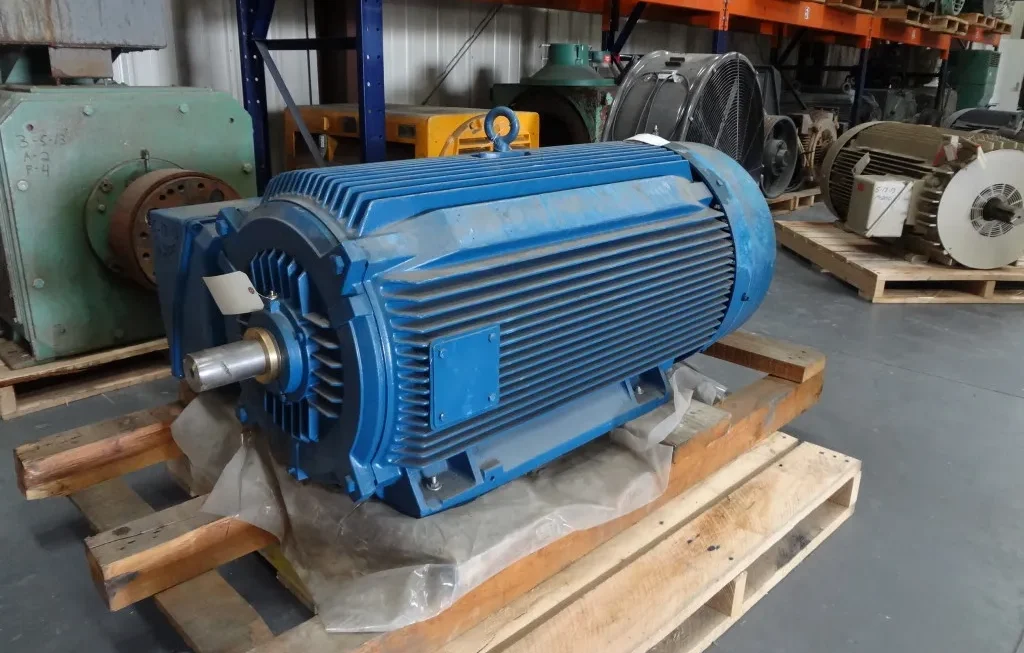Electric motors are vital in modern living. Starting with the small motors that power watches’ batteries to the huge motors that are used in industrial machines electric motors convert electrical energy in mechanical energy.
The rotor’s poles generate magnetic fields that can be used to react with currents of electric energy in the winds to generate forces across the shaft. This is referred to as Commutation.
Buy Electric Motors
Motors that are electric make up the core of every electric vehicle. They convert electricity (whether in an electric vehicle, a plug-in hybrid electric grid power inverters for vehicles, vehicle inverters or alternative energy sources as well as Inverters) to mechanical power by using magnetism to generate forces that are the torque of a shaft turning.
Comparing to conventional internal combustion motors, electric motors are at least 10-fold more effective when it comes to changing electricity into motion. As a result, you’ll take less time to recharge your car and spend more time enjoying the benefits of owning an emission-free, quiet and healthy machine. Locate an electric motor through surplusrecord. Electric motors which are industrial-grade are the most effective way to buy electric motors. Sold electric motors on surplusrecord.
Another benefit for electric motors is the use of regenerativebraking in order to capture the energy of kinetics, which would be otherwise wasted in heat. They then return it in the form of a battery that can be utilized for future use. This helps reduce wear and tear of the traditional brakes on the vehicle and also extends their lifespan. When purchasing an electric engine consider the following factors:
Used Electric Motors
A motor that has an electric charge to convert electrical energy to mechanical power. It works by combining the principles of electromagnetism as well as magnetism. The primary components include stators and an rotating. The rotor is equipped with permanent magnets or electromagnets as well as the stator. The rotor can be powered by direct or alternating current. Its primary purpose is to generate force or torque.
The force that is generated is a rotary force, or a linear force. It then drives an external mechanism. The mechanism can range from the blower, fan, or pump, and could also include machines household appliances, power equipment, and even motor vehicles. The most significant benefit of electrically powered industrial motor can be the lower cost of initial investment as compared to fossil fuel motors that have the same power. Furthermore, it doesn’t require maintenance on oil for the engine unlike other types of equipment.
Additionally, electric motors have an lower depreciation cost. Thus, purchasing the used motor is an alternative to purchasing new motors. This can help businesses save money as well as have their machinery up and up and running faster.
Although electric motors are reliable and durable machines, they’re not immune to small problems or gradual degradation. It is therefore essential to implement an ongoing maintenance program for electric motors in order to ensure optimal performance for the devices. So, issues can be addressed prior to them becoming major repairs or even breakdowns.
Surplus Motors
It doesn’t matter if they’re AC motors or DC motors. They convert electric power into mechanical energy. The magnetic field generated by the motor’s rotating rotor as well as coils in its stationary stator generates forces in the form of torque. The force is transferred to the shaft of the motor. The mechanical power is then applied to those applications that require continuous operation, or even a continuous one.
In all kinds of electric motors, the outer part, referred to as the stator is constructed of steel alloy laminations and windings that make up the base of the induction coils. Induction coils operate on the alternating current of a three-phase energy source. The inner part core, known as the rotor is made up of metal bars and induction coils. They form a reversal of North as well as South poles that attract one through the magnetic field produced by the magnets in the rotor’s central. When they flip the polarity the coils within the rotor each time they turn they produce an oscillation force that propels the shaft of the rotor.
The shaft of the rotor protrudes from the bearings, and they can be used to hold it in the housing of the motor. The distance between the stator rotor could decide the speed and performance of the motor. The larger gaps will result in lower performance. A gap that is smaller is the best choice.
All of the categories of generators and electric motors provide a maximum torque when running the shaft. It is controlled through core saturation and safe temperature rise and voltage. They are also classified according to various other elements like the energy source, their construction, use and the types the motor’s output.
Industrial Electric Motors
Electrical motors transform electrical power to mechanical energy as a result of motion in the form of. They play a crucial role for the vast majority of industrial uses. Without them, we’d require gasoline or diesel engines, which cause pollution and expense money.
The majority of electric motors in the industrial sector run on alternating current. They are also referred to as AC induction motors as well as AC Synchronous motors. The main elements of electric motors for industrial use are the rotor and air gap winding (coil) and commutator.
Electric current moves through the windings of the stator and axon to create magnetic fields that push against one another. The force generated by magnetic fields produces an electric torque which causes the rotor to turn. The air gap between the rotor and stator is the primary determinant of how fast the motor can rotate. An air gap too wide can will result in a poor performance. A lack of gaps can cause mechanical problems. You can buy an electric motor through record surplus.



